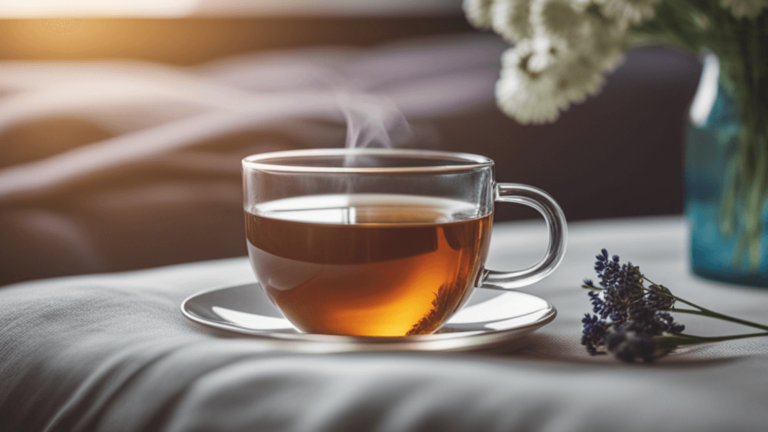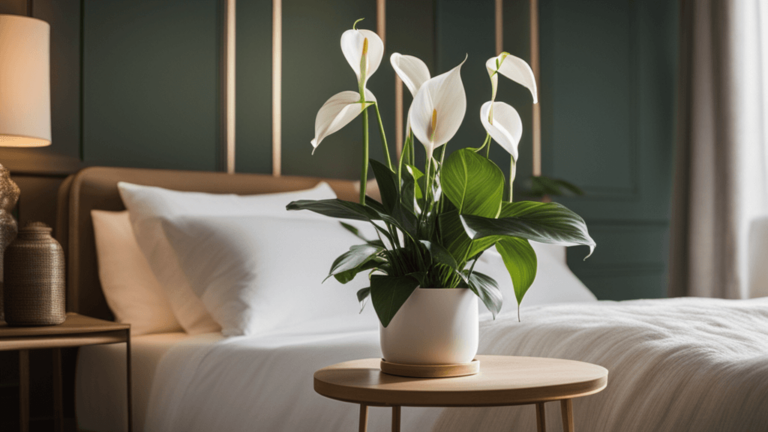How to Sleep Better During Easter Celebrations: Your Ultimate Guide [2025]
Spring represents a time of renewal, growth, and fresh beginnings. As nature awakens around us, we too can embrace this season of transformation to enhance our wellbeing and improve our sleep quality. Easter, with its themes of rebirth and rejuvenation, offers the perfect opportunity to create peaceful rituals that promote both physical and mental restoration. From embracing longer days to incorporating seasonal self-care practices, this guide explores how to sleep better during Easter by harnessing the unique elements of spring to create a truly restorative experience.
With soothing music, refreshing scents, nourishing foods, and mindful practices, we’ll explore how to create a truly restorative experience that promotes relaxation and rejuvenation. These strategies will help ensure that you not only celebrate spring but also sleep better, waking up feeling refreshed and ready to make the most of the day!
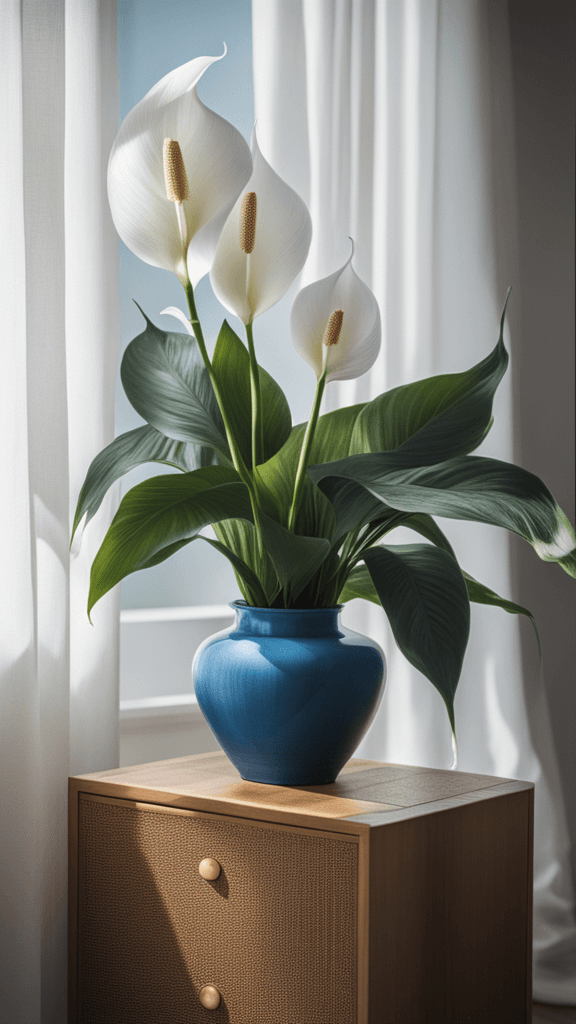
Creating Your Sleepy Spring Soundtrack
Beautiful Nature, Miracles, Journeys, and Dreams
Let’s start by discussing your music choices. Music can be a powerful ally in promoting better sleep, and spring-themed songs are no exception. Research indicates that adults who listen to 45 minutes of relaxing music before bed not only fall asleep faster but also experience longer sleep durations and report improved overall sleep quality. Incorporating this into your nighttime routine can be a simple yet effective way to promote restful sleep.
To help you embrace the spirit of Easter, we’ve curated a list of ten soft, spring-themed songs. These selections are chosen for their uplifting messages of renewal and growth, as well as their soothing ambiance. What makes these songs particularly effective for relaxation are their shared characteristics: slow tempos (ideally between 60-80 beats per minute, matching a resting heart rate), minimal percussion, and repetitive rhythms. Consider creating a playlist with these and other calming, spring-themed tunes to listen to as you wind down for the night.
“Ordinary Miracle” by Sarah McLachlan
- Tempo: 66 BPM
- Characteristics: A contemplative ballad that celebrates the beauty in everyday occurrences. McLachlan’s soulful voice encourages listeners to find wonder in the simplest aspects of life.
“What a Wonderful World” by Anne Murray
- Tempo: 68 BPM
- Characteristics: Murray’s version maintains the song’s optimistic outlook on life and nature. Her smooth, warm vocals complement the song’s message of appreciating the world’s beauty.
“Sunshine On My Shoulders” by John Denver
- Tempo: 73 BPM
- Characteristics: A tender, introspective song. Denver’s lyrics express a longing for warmth and brightness, with simple yet poignant imagery that resonates with listeners seeking comfort.
“Songbird” by Eva Cassidy
- Tempo: 77 BPM
- Characteristics: Cassidy’s pure, emotive voice brings a raw vulnerability to the love song, creating an intimate atmosphere that’s perfect for quiet reflection.
“Sailing” by Rod Stewart
- Tempo: 64 BPM
- Characteristics: This melodic ballad evokes the tranquility of being at sea. Stewart’s distinctive raspy voice conveys a sense of peace and freedom, making it an ideal choice for relaxation.
“Somewhere Over the Rainbow” by Katharine McPhee
- Tempo: 60 BPM
- Characteristics: McPhee’s clear, soaring vocals capture the song’s wistful longing and hope for a better place, with a contemporary rendition of the classic “Wizard of Oz” song.
“These Are the Days” by Van Morrison
- Tempo: 76 BPM
- Characteristics: A nostalgic, jazzy tune that celebrates life’s precious moments. Morrison’s soulful delivery and the song’s gentle swing create a warm, comforting ambiance.
“Daydream Land” by Jewel
- Tempo: 60 BPM
- Characteristics: With its dreamy lyrics and Jewel’s ethereal vocals, the song transports listeners to a peaceful, imaginary world in her signature folk-pop style.
“A Million Dreams” by Ziv Zaifman, Hugh Jackman & Michelle Williams
- Tempo: 74 BPM
- Characteristics: An uplifting ballad about hope and ambition. The blend of Ziv Zaifman, Hugh Jackman, and Michelle Williams’ voices creates a inspiring and soothing soundscape.
“When You Believe” by Whitney Houston & Mariah Carey
- Tempo: 62 BPM
- Characteristics: This powerful combination of these two iconic voices speaks to the strength of faith and perseverance in a moving, inspirational ballad perfect for quiet contemplation.
Save this playlist
Helpful hint: Start playing your sleep playlist about 45 minutes before bedtime, keep the volume low, and use speakers rather than headphones for maximum comfort.
Coastal Serenity: An Easter Relaxation Retreat

Coastal-inspired decor brings a fresh tranquility to a space through its clean lines and natural character. A whitewashed wooden bed frame with subtle blue accents or a rattan design with woven details provides an anchor point that evokes feelings of shoreline renewal and tidal rhythms. This connection to water’s eternal cycles can help you rest more peacefully, while the typically airy scale of coastal pieces creates a light, breathable atmosphere that naturally promotes relaxation – perfect for unwinding during the bright optimism of the Easter season.
Incorporating coastal lighting fixtures like sea glass pendant lights or ceramic lamps in soft aqua tones with dimmers adds layers of gentle, diffused illumination that enhances both spring’s refreshing energy and healthy rest patterns. These pieces often feature water-inspired hues that create subtle color play reminiscent of sunlight dancing on gentle waves, adding visual interest during waking hours while easily softening for peaceful evenings. The cool, clear quality of blue-tinted glass or glazed pottery fixtures adds a serene ambiance that echoes spring’s awakening in ways that heavier designs simply can’t match.
The magic of coastal elements lies in their ability to evoke seaside tranquility through thoughtful details – a driftwood-framed mirror reflecting the Peace lilies on your nightstand, a woven seagrass basket holding lightweight cotton throws, or sheer white curtains billowing in the spring breeze. These pieces bring an inherent lightness to a room’s atmosphere that more structured styles rarely achieve. The natural textures of jute, linen, and weathered wood create an organic palette that echoes the simple beauty of shorelines awakening in spring, making it easier to unwind and transition into restful sleep during Easter.
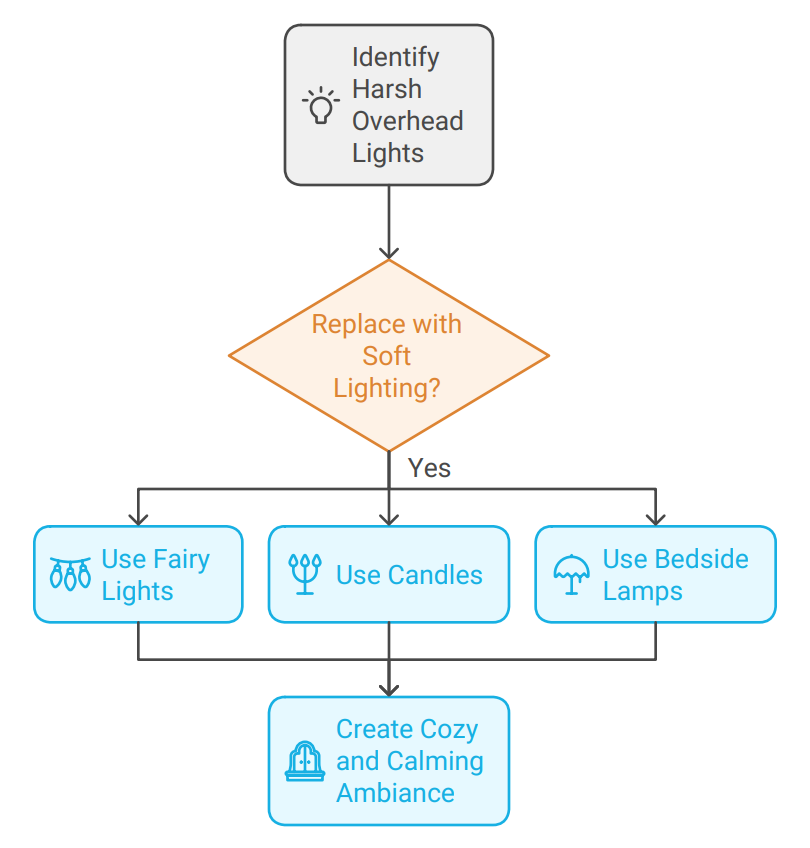
Spring Plants and Soothing Decorations
Create a rejuvenating and restful sanctuary this Easter season by incorporating sleep-promoting natural elements.
Peace Lily: The Tranquility Plant
Peace lilies create stunning Easter decor with their elegant, spoon-shaped leaves and pure white blooms resembling spring’s renewal. Research from NASA’s Clean Air Study shows they’re also powerful air purifiers, removing harmful VOCs like formaldehyde, ammonia, toluene, and xylene from indoor air. Peace lilies are not only beautiful and functional but also easy to care for. The plant’s graceful white flowers can brighten any corner, symbolizing peace and new beginnings while creating a serene atmosphere perfect for spring relaxation.
African Violet: Nature’s Gentle Awakening
These enchanting plants seem designed for a spring-inspired retreat, with their velvety leaves and delicate blooms in Easter-worthy purples and pinks. African violets are ideal for enhancing a relaxation space, as their consistent flowering brings perpetual color throughout the season. They’re also beloved for their ability to thrive indoors, bringing the essence of spring gardens inside. Indoor plants like African violets prefer humidity levels at the ideal 40-60% range recommended for optimal rest. The soft texture of their leaves adds a tactile element to your space, potentially contributing to a more grounding and peaceful environment.
Homemade Lavender Candles: Essence of Calm
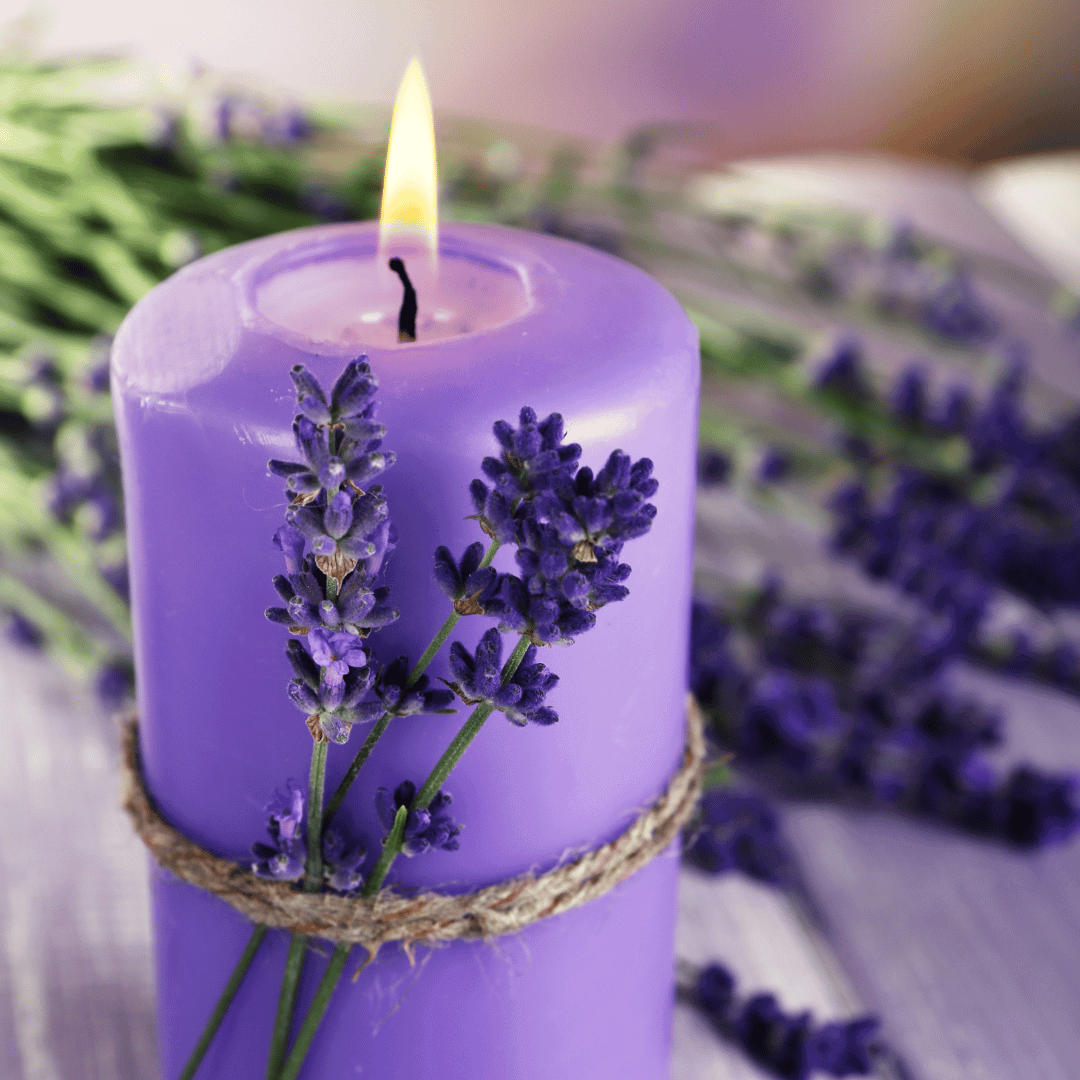
Creating homemade lavender candles is a mindful spring ritual that blends sensory elements to evoke renewal and emotional balance. Begin with a foundation of natural soy or beeswax, adding dried lavender buds and essential oil – ingredients known for their stress-reducing and sleep-enhancing properties. Consider incorporating complementary scents like sweet orange or bergamot to create a multi-dimensional fragrance profile that captures spring’s freshness. The gentle flickering light mimics the lengthening days of spring, while the soothing lavender aroma helps signal to your body that it’s time to unwind. Display these handcrafted candles in pastel-colored holders or nestled among Easter decorations for a seasonal touch that transforms your space into a haven of springtime tranquility.
DIY Lavender Candle
Materials: Soy wax, wick, heat-safe container like a mason jar, lavender oil, double boiler.
- Melt wax in double boiler (don’t overheat).
- Optional: add dye or crayons for color.
- Add 10-15 drops lavender oil per candle to melted wax.
- Optional: add dried herbs like lavender or rosemary
- Attach wick to container bottom.
- Pour wax into container.
- Trim wick to 1/4 inch.
- Cool for 24 hours before use.
Not only do they look great, but they smell good too. Speaking of which…
Easter Scents: Essential Oils for Sweet Dreams
As spring blooms into Easter season, our senses embrace the rejuvenating spirit of renewal. Certain fragrances have the remarkable ability to both refresh our minds and create an atmosphere of peaceful awakening, making them perfect for Easter celebrations and spring relaxation. These naturally derived scents serve as powerful allies in transforming your space into a serene sanctuary while nurturing a connection with the renewing energy of the season.
When diffused in your bedroom or crafted into delicate room sprays, these aromatic treasures help release winter tension, elevate mood, and promote a sense of bright optimism. After family gatherings and Easter festivities, these spring-inspired scents calm busy minds, allowing you to unwind and recharge amidst the gentle embrace of fresh floral and crisp green notes. Let these revitalizing aromas create a tranquil retreat where relaxation and renewal intertwine, making every moment feel like a refreshing escape into the promise of spring.
Essential Oils for Springtime Tranquility
Consider these refreshing scents to not only make your home smell amazing but also help you relax and drift off into a restful sleep during the Easter season.
Lavender
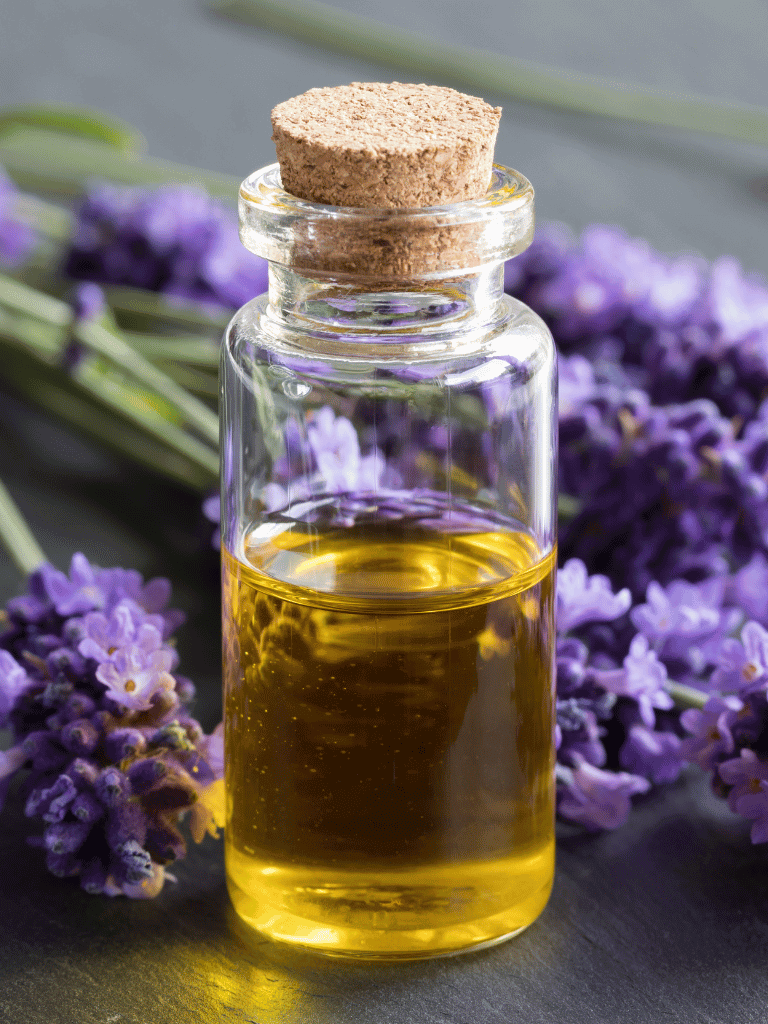
The gentle aroma of lavender essential oil carries both emotional and physiological benefits for sleep. Its soft, herbaceous notes have been shown to reduce anxiety and promote feelings of calm and restoration. Lavender’s natural sedative properties can help ease you into a peaceful sleep while its associations with spring gardens make it particularly fitting for both rest and renewal. We like LiveGood Therapeutic Grade Premium Essential Oils. Also consider lavender tea to promote relaxation after Easter festivities.
Geranium
Fresh and balancing, geranium essential oil offers one of the most versatile fragrances for spring sleep enhancement. Its floral, slightly rose-like scent helps regulate emotions and hormonal balance, helping to quiet winter-weary minds. Geranium can reduce stress responses and promote natural relaxation in the brain, indicating a more balanced state. It has been used as a harmonizing oil for centuries, making it not just a sleep aid, but a multifaceted essential oil with wonderful rejuvenating potential.
Bergamot
Often called “Nature’s Stress Reliever,” bergamot’s uplifting citrus scent has been prized for centuries for its ability to promote both relaxation and optimism. This bright essential oil has been shown in studies to be effective for improving sleep quality and reducing anxious feelings. Its complex citrus notes help reduce tension while promoting deeper, more restful sleep cycles—perfect for transitioning into spring’s lighter evenings.
Roman Chamomile
Gentle and soothing, Roman chamomile essential oil offers an apple-like, sweet aroma that helps calm busy minds. Its primary compounds have been demonstrated to have gentle sedative effects, helping to reduce restlessness and promote longer periods of deep sleep. The warm, comforting notes of chamomile create an environment conducive to both relaxation and peaceful contemplation of spring’s renewal. Also consider chamomile tea.
Clary Sage
This remarkable herb’s essence carries a nutty, herbaceous fragrance that helps ease tension and regulate breathing, making it ideal for pre-sleep relaxation. Clary sage is known for its ability to reduce stress and promote feelings of wellbeing, while its earthy aroma creates a grounding atmosphere. The oil’s natural hormone-balancing properties can help ease you into sleep while reducing springtime seasonal transitions.
Helpful hint: Start diffusing about 30 minutes before bedtime to create a relaxing environment.
Custom Scents: Homemade Room Sprays

As Easter approaches, the air fills with enchanting scents of renewal and possibility. Why not bring these spring-inspiring aromas into your home with handcrafted room sprays? Creating your own seasonal fragrances is not only a delightful way to relax, but it also allows you to blend custom scents that spark rejuvenation and create lasting memories. These personalized aromatic creations can transform any space into a spring retreat perfect for celebrating the season’s most peaceful moments.
- In a glass measuring cup, combine the essential oils.
- Add the witch hazel and mix well.
- Pour the mixture into a glass spray bottle.
- Add the distilled water and shake thoroughly to combine.
Lavender and Bergamot: Spring Serenity
- 25 drops Lavender oil
- 20 drops Bergamot oil
- 1 cup distilled water
- 2 tablespoons witch hazel
Geranium and Clary Sage: Garden Renewal
- 20 drops Geranium oil
- 15 drops Clary Sage oil
- 1 cup distilled water
- 2 tablespoons witch hazel
Roman Chamomile and Lavender: Easter Calm
- 20 drops Roman Chamomile oil
- 20 drops Lavender oil
- 1 cup distilled water
- 2 tablespoons witch hazel
Adjust the number of drops to your preference, but keep the total around 30-45 drops per cup of water for a balanced fragrance.
- Roman Chamomile oil works exceptionally well as a gentle base note, stabilizing other fragrances.
- Clary Sage oil can be quite dominant, so use it sparingly in blends.
- Bergamot oil offers a bright, citrusy top note that evaporates quickly, consider using slightly more than other oils.
- Geranium oil provides excellent balancing properties, and pairs well with both citrus and herbaceous oils.
- Lavender oil serves as an excellent middle note, creating harmony in complex blends.
- Witch hazel can assist in creating a more stable mixture by helping the essential oils disperse evenly throughout the water, and may help protect against environmental stressors.
Also consider scents from other themes like Christmas holiday essential oils, Valentine’s Day essential oils, and Thanksgiving essential oils.
Mix it up in a spray bottle, give it a good shake, and lightly mist your pillows and bedding before bed. Springtime serenity awaits!
Feast for Sleep: Easter Foods That Promote Rest

We’ve covered the sounds, sights, and smells of spring, what’s next? Ah yes, one of the best parts, taste! Alright, let’s talk lamb… and eggs… and carrots! What you eat can significantly impact how well you sleep during the Easter holidays. Let’s explore which traditional spring foods can actually help improve your sleep during this season of renewal.
Lamb: Perfect for Easter Relaxation
Lamb offers multiple sleep-supporting benefits through its nutritional profile. Rich in tryptophan, an essential amino acid, lamb helps produce serotonin and melatonin, hormones crucial for mood regulation and sleep cycle management. Traditional seasonings like garlic and rosemary further enhance its sleep-promoting properties. Garlic contains compounds that help regulate blood pressure and induce relaxation, while rosemary’s calming aroma can reduce stress hormones that might otherwise disrupt rest. The high protein content helps stabilize blood sugar levels, preventing nighttime energy fluctuations. The satisfying fullness after consuming lamb contributes to a sense of overall relaxation, potentially improving sleep quality.
Egg-cellent Choices: Shell Your Way to Better Sleep
Eggs aren’t just symbolic Easter treats – they’re also packed with nutrients which have been shown to improve sleep quality!
- Choline
- Eggs are very high in choline, which helps regulate mood and support nervous system function.
- B vitamins
- Eggs contain several B vitamins, including B12, B2 (riboflavin), and B5 (pantothenic acid), which support energy production and nervous system function.
- Vitamin D
- Eggs, particularly the yolks, are good sources of vitamin D, which has been shown to help improve sleep quality and duration.
- Tryptophan
- Eggs contain tryptophan, an amino acid that helps produce serotonin and melatonin.
- Other nutrients
- Eggs contain various nutrients that may contribute to better sleep, including antioxidants, selenium, and healthy proteins.
Carrot Comfort: Nourish Your Way to a Peaceful Night’s Rest
Carrots, a springtime garden favorite and Easter bunny essential, offer surprising benefits for quality sleep. These vibrant root vegetables are rich in alpha-carotene and beta-carotene, which the body converts to vitamin A, crucial for maintaining healthy sleep cycles. Research suggests that the potassium in carrots helps regulate muscle function and prevent disruptive nighttime leg cramps. The fiber in carrots promotes steady digestion, preventing uncomfortable feelings that might otherwise wake you during the night. Whether enjoyed raw with a spring dip, roasted with honey as a side dish, or baked into a carrot cake for Easter dessert, incorporating these orange wonders into your spring meals can help ensure you wake up feeling refreshed and renewed, just like the season itself.
Easter Recipes for Better Sleep
Carrot-Infused Egg Bites Recipe: Bright, Healthy, and Tasty
Ingredients
- 6 hard-boiled eggs
- 1 large carrot, peeled and grated
- 2 tablespoons Greek yogurt
- 1 teaspoon Dijon mustard
- Sea salt and pepper to taste
- Fresh chives or parsley, chopped, for garnish
Instructions
- Prepare the Eggs: Peel the hard-boiled eggs and slice them in half lengthwise. Carefully remove the yolks and place them in a mixing bowl.
- Prepare the Carrots: Steam or boil the grated carrot until soft, then let it cool.
- Make the Filling: Mash the egg yolks with a fork. Add the cooled carrots, Greek yogurt, Dijon mustard, sea salt, and pepper. Mix until smooth and well combined.
- Fill the Egg Whites: Spoon or pipe the carrot-yolk mixture back into the egg white halves.
- Garnish: Sprinkle with chopped chives or parsley for added flavor and color.
This recipe combines the protein of eggs with the nutrients of carrots, creating a healthy and festive snack perfect for Easter celebrations.
Mint Green Tea Recipe: Refreshing Calm
Ingredients
- 4 cups water
- 4 green tea bags (or 2 tablespoons loose leaf green tea)
- 2 sprigs fresh mint leaves (plus more for garnish)
- 1/4 cup honey (or to taste)
- Lemon slices (for serving)
Instructions
- Boil 4 cups of water in a saucepan.
- Remove from heat, add tea bags and mint. Cover and steep for 10 minutes.
- Discard tea bags and mint. Stir in honey until dissolved.
- Serve warm or chill. Garnish with fresh mint and lemon slices when serving.
This Mint Green Tea is not only refreshing but also adds a lovely touch to your Easter brunch! Enjoy!
Mindfulness and Stress Management: The Gift of Spring Renewal
Let’s face it – even the spring season can be stressful. Between preparing Easter celebrations, spring cleaning, and trying to create the perfect family memories, it’s easy to feel overwhelmed. But stress is the enemy of good sleep. So, let’s talk about how to keep calm and sleep on during this season of renewal.
Breathe In the Spring Air (and Out the Stress)
Start and end your day with a few minutes of mindful breathing, ideally outdoors. Place one hand on your chest and the other on your belly. Take slow, deep breaths, focusing on the rise and fall of your chest and abdomen. Imagine breathing in the fresh spring air filled with the scent of blooming flowers and breathing out any seasonal stress.
Spring Movement: Exercise for Better Rest
The arrival of spring offers the perfect opportunity to move your body outdoors, which research shows can dramatically improve sleep quality. Whether it’s a leisurely evening walk through a neighborhood filled with blossoming trees, a morning game of tennis with the longer daylight hours, or a spontaneous family frisbee session after Easter lunch, outdoor exercise provides a powerful combination of natural light exposure (which helps regulate your body clock) and physical activity (which promotes deeper sleep). The vitamin D you absorb from springtime sunshine further supports your sleep-wake cycle, while the natural surfaces outdoors – grass, earth, sand – provide varied resistance that engages different muscle groups than indoor workouts. Aim for at least 30 minutes of outdoor activity daily, but remember that even a 10-minute stroll among spring flowers can reduce cortisol levels and prepare your body for restful sleep later.
Mindful Eating: Savor the Season
During Easter meals, practice mindful eating. Take time to really taste each bite, noticing the flavors, textures, and aromas of your seasonal foods like lamb, fresh asparagus, and carrot dishes. This can help prevent overeating and indigestion, which can interfere with sleep. Plus, it makes those chocolate eggs and hot cross buns even more enjoyable!
Gratitude: The Gift That Keeps on Giving
Before bed, take a moment to jot down three things you’re grateful for about the spring season. This positive focus can help calm your mind and shift your perspective from stress to appreciation. Maybe you’re thankful for the first daffodils in your garden, or the way morning light streams through your windows earlier each day. Whatever it is, focusing on the good stuff can help you drift off with a smile.
Creating Your Spring Bedtime Ritual
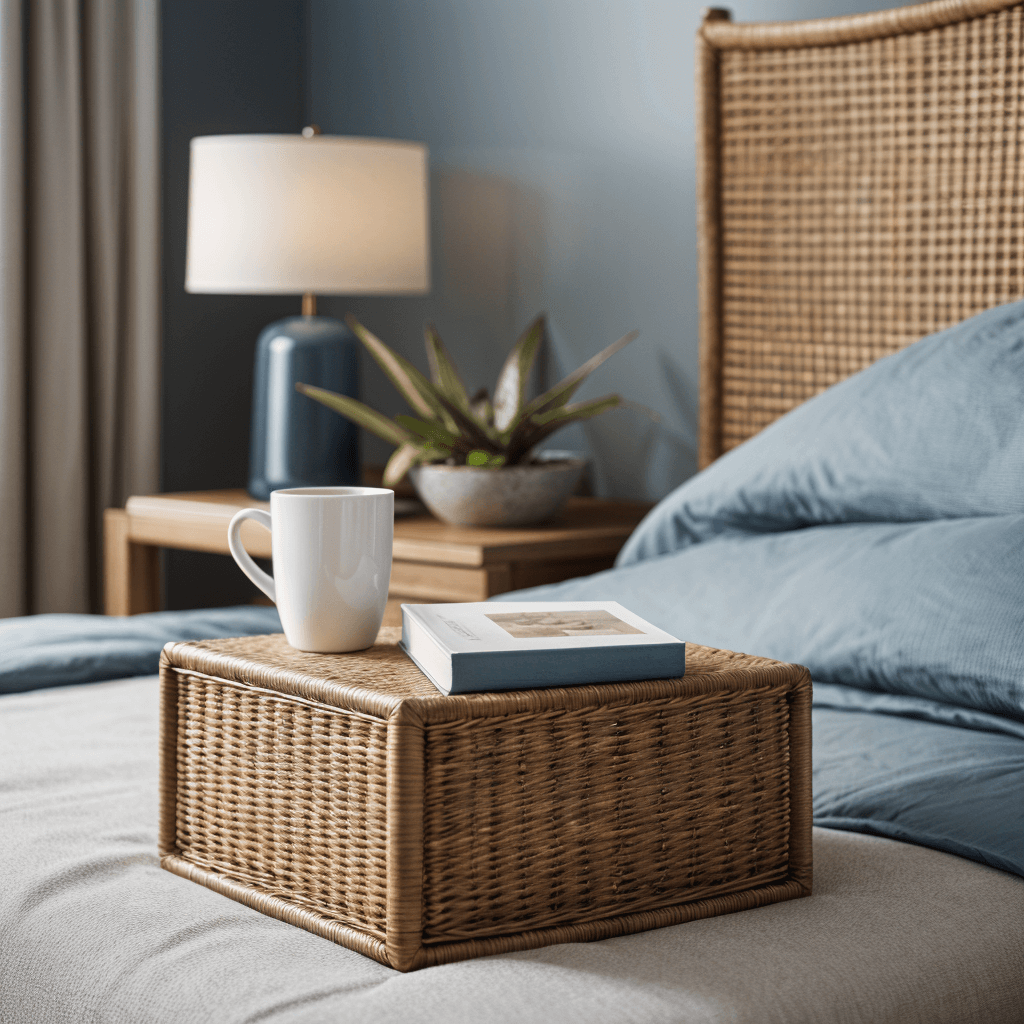
- Set a consistent bedtime, even during Easter festivities
- Dim lights 1-2 hours before bed
- Listen to gentle nature sounds or soft spring-themed music
- Use spring-themed aromatherapy in a diffuser or homemade room spray
- Practice 5-10 minutes of gentle stretching
- Write in a gratitude journal about your outdoor experiences
- Avoid screens for the last hour before sleep
Remember, mindfulness and stress management are practices. Don’t get discouraged if your mind wanders or if you feel stressed – simply notice when this happens and gently bring your attention back to the present moment, just as you might pause to notice a butterfly or new bloom during a springtime walk. It’s all part of the process.
Remember at This Time of Renewal…
As we’ve explored throughout this guide on how to sleep better during Easter, the season offers a unique opportunity to align our sleep routines with the natural rhythms of spring. By thoughtfully incorporating seasonal elements, from gentle music and spring-inspired decor to nourishing foods and mindful practices, we create not just a better night’s sleep, but a deeper connection to the renewing energy that surrounds us this time of year.
The beauty of a spring sleep ritual lies in its holistic approach. Rather than focusing on a single solution, we’ve woven together multiple sensory experiences that work in harmony: the soft melodies of spring songs, the soothing scents of seasonal essential oils, the nourishing qualities of traditional Easter foods, and the calming power of mindfulness practices. Each element builds upon the others, creating a comprehensive approach to rest that celebrates the essence of this season of rebirth.
As you implement these suggestions, remember that creating better sleep habits is itself a journey of renewal, one that requires patience, consistency, and self-compassion. Just as spring unfolds gradually, with each flower opening in its own time, your path to better sleep may have its own unique rhythm. Embrace the process, celebrate small improvements, and trust that with each mindful choice, you’re creating not just better nights but more vibrant, energized days filled with the promise and potential that spring embodies.
Spring Sleep and Easter Relaxation FAQ
How does changing to Daylight Saving Time in spring affect sleep, and what can I do about it?
The spring forward time change can disrupt your circadian rhythm, causing temporary sleep difficulties as your body adjusts to losing an hour. To minimize the impact, start adjusting your bedtime 15 minutes earlier a few days before the change. Ensure you get bright morning light exposure to help reset your body clock, maintain consistent sleep and wake times even on weekends, and consider using blackout curtains to keep your bedroom dark as evening daylight hours extend. Most people adjust within a week by following good sleep hygiene practices during this transition.
Can spring allergies affect sleep quality, and how can I manage them at night?
Yes, spring allergies can significantly impact sleep by causing congestion, sneezing, and itchy eyes that make it difficult to fall and stay asleep. To minimize these effects, shower before bed to remove pollen from your hair and skin, use allergen-proof covers for pillows and mattresses, keep windows closed during high pollen count days, wash bedding weekly in hot water, and use a HEPA air purifier in your bedroom. Also consider bedroom plants to improve air quality.
What are the best bedroom plants for improving sleep during spring?
Several plants can be considered for improving sleep during the spring season. Lavender, known for its calming scents that may help reduce stress and promote relaxation. Peace lilies are excellent choices, offering both air-purifying qualities and an elegant appearance. African violets provide a soft, soothing visual element and help regulate bedroom humidity which can create a more comfortable sleeping environment. Snake plants are remarkable for their ability to filter air and release oxygen at night. Jasmine, with its gentle fragrance, has been associated with reducing anxiety levels. Valerian plants may contribute to improved sleep quality, while English ivy can help reduce airborne mold. Aloe vera is another beneficial plant that releases oxygen during nighttime hours and requires minimal maintenance.
How does the longer daylight of spring affect melatonin production and sleep?
Longer spring daylight hours can delay natural melatonin production, potentially making it harder to fall asleep at your usual time. To counter this effect, maintain a consistent sleep schedule regardless of daylight changes, use blackout curtains or sleep masks to create darkness, reduce blue light exposure from screens 1-2 hours before bed, and dim household lights in the evening to signal your body it’s time to wind down. These strategies help your body maintain its natural sleep-wake rhythm despite seasonal light changes.
What spring foods besides those mentioned can help promote better sleep?
Springtime offers a variety of foods that promote better sleep. Cherries stand out as one of the few natural sources of melatonin, while leafy greens like spinach and kale provide rich magnesium content that helps muscles relax. Spring salmon delivers high levels of vitamin D and omega-3s that regulate serotonin, and honey facilitates tryptophan’s easier passage into the brain. Fresh herbs such as mint and basil bring natural calming properties to the table. Incorporating these seasonal foods into your evening meals can create a natural sleep-promoting diet during the spring season.
How can I create a spring cleaning routine specifically focused on improving sleep?
A sleep-focused spring cleaning routine should prioritize your bedroom environment. Start by washing all bedding (including pillows and comforters) in hot water to eliminate dust mites and allergens. Flip or rotate your mattress and vacuum it thoroughly. Clean ceiling fans, air vents, and replace HVAC filters to improve air quality. Declutter your sleeping space to create a calming environment. Clean windows and screens to maximize natural light during the day. Consider repainting with calming colors or adding blackout curtains. Finally, evaluate your bedding – is it time for new pillows or a mattress topper? This targeted approach creates a fresher, cleaner sleep sanctuary.
How can I balance Easter celebrations and family gatherings with maintaining healthy sleep habits?
To balance Easter celebrations with healthy sleep, schedule the main family gathering earlier in the day rather than in the evening when possible. Set clear end times for festivities to ensure adequate wind-down time. Be mindful of sugar and alcohol consumption, especially in the hours before bedtime. If traveling, bring sleep essentials like your own pillow or a favorite book to maintain some consistency. For children, try to maintain regular nap schedules despite the excitement. If you do have a late night or disrupted sleep due to celebrations, avoid oversleeping the next morning – instead, get back to your regular schedule and consider a short afternoon nap if needed. Remember that occasional sleep disruptions for special occasions are normal – return to your healthy sleep routine as soon as possible afterward.






